Scaffolding Rental Uniontown
Find the best Scaffolding Equipment Rental in Uniontown
Receive 3 FREE Scaffolding Hire quotes for your project today! Compare profiles, reviews, accreditations, portfolio, etc... and choose the best service.
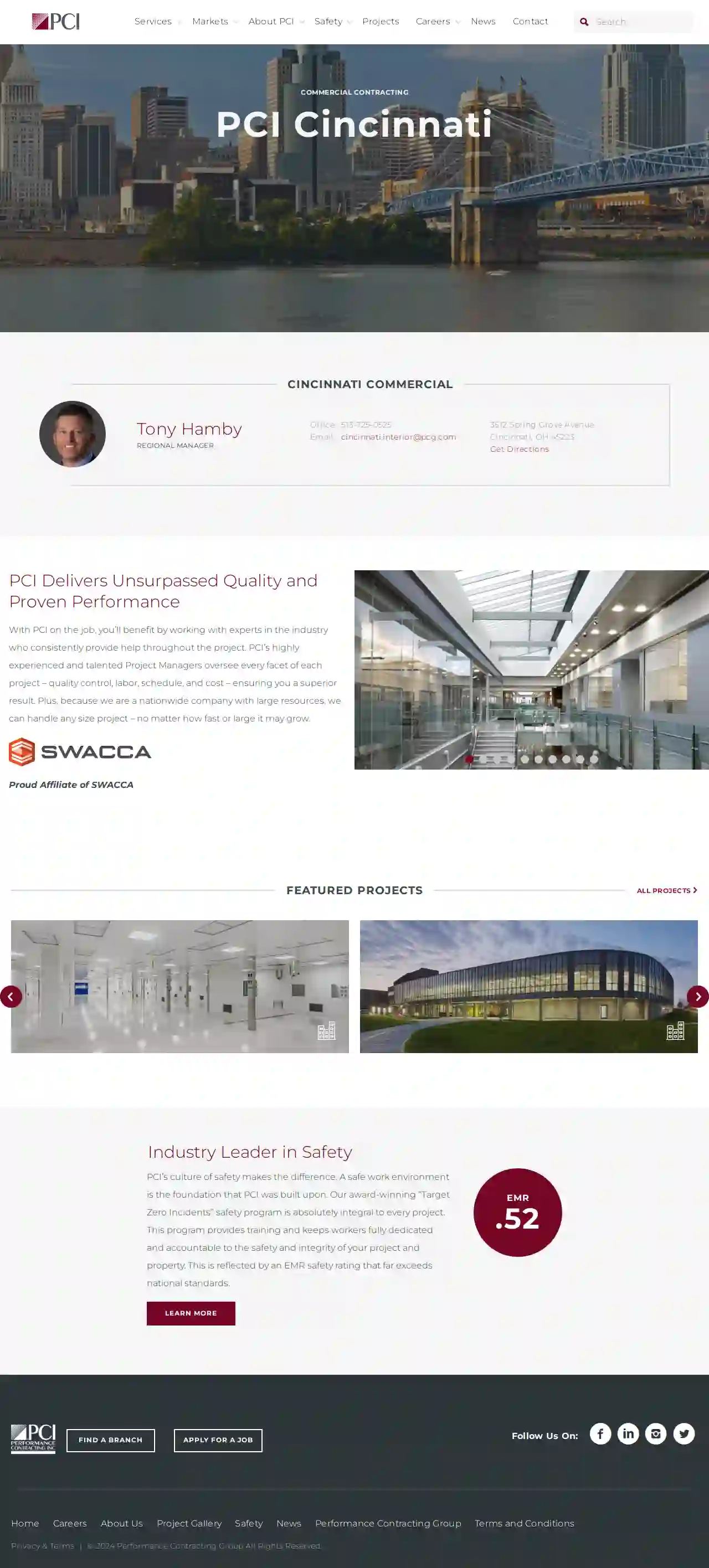
Performance Contracting Inc
4.77 reviewsCincinnati, OH, 3512 Spring Grove Avenue, 45223, USPerformance Contracting, Inc. is a top-tier specialty contractor in the United States, providing a wide range of services to industrial, commercial, and non-residential sectors. With over 60 years of experience, PCI delivers top-tier construction services, focusing on creativity, innovation, and customer satisfaction. PCI's integrated service offerings provide a comprehensive solution designed to streamline projects and increase overall efficiency. The company prioritizes safety, with an industry-leading EMR safety rating that far exceeds national standards.
- Services
- Why Us?
- Accreditations
- Our Team
- Testimonials
- Gallery
Get Quote
Walmart Supercenter
3.7Lorain, USWelcome to Walmart! Walmart is a leading retailer that offers a wide variety of products and services at affordable prices. We are committed to providing our customers with a convenient and enjoyable shopping experience. Whether you're looking for groceries, electronics, clothing, or home goods, you're sure to find what you need at Walmart. We are proud to serve our community and offer a wide range of services, including pharmacy, photo center, and money services. Our friendly and knowledgeable associates are always available to assist you with your shopping needs. Shop online or visit one of our stores today and experience the Walmart difference!
- Services
- Why Us?
- Gallery
Get Quote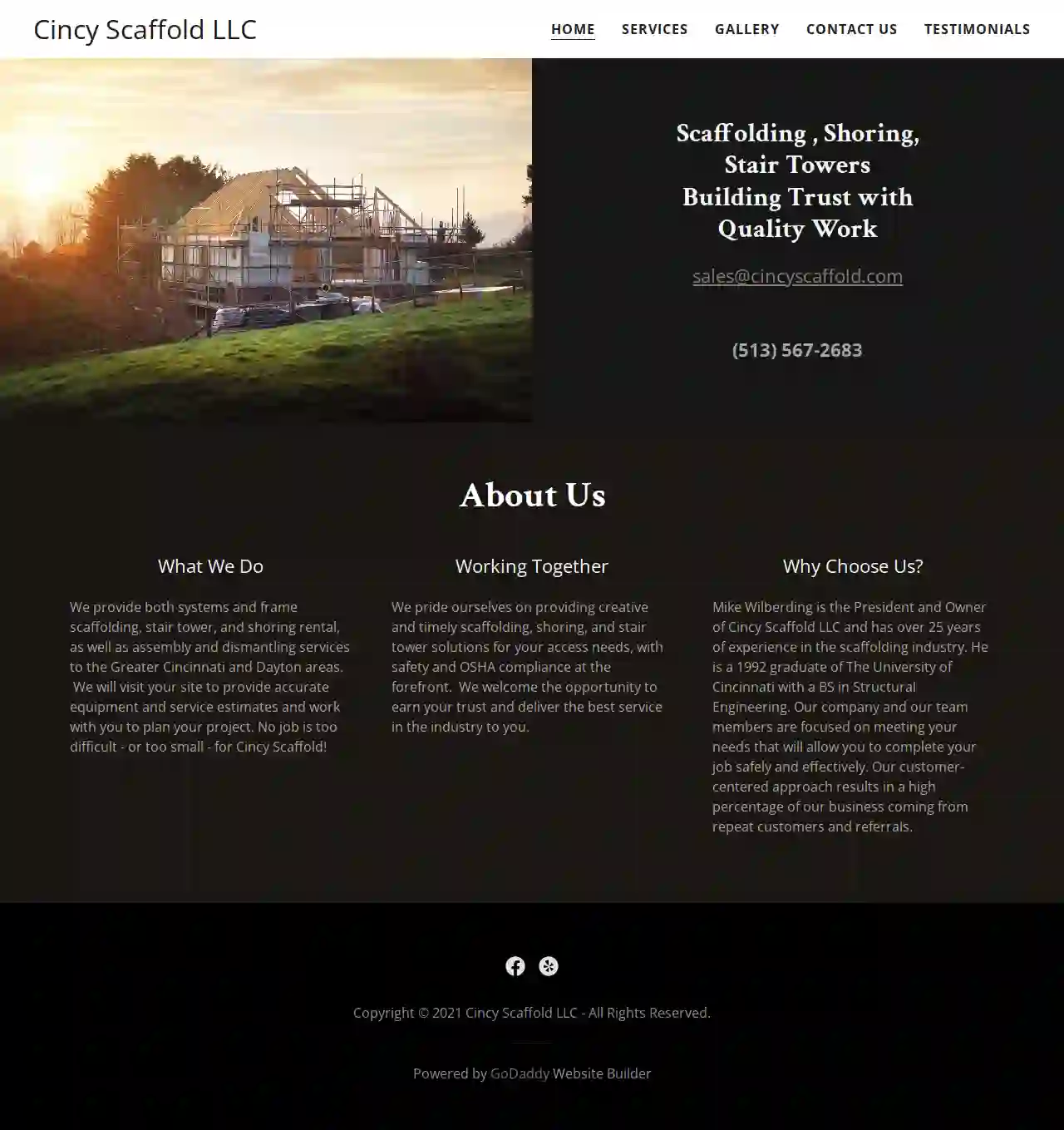
Cincy Scaffold LLC
52 reviewsP.O. Box 61, West Chester, 45071, USAt Cincy Scaffold LLC, we pride ourselves on providing creative and timely scaffolding, shoring, and stair tower solutions for your access needs. With over 25 years of experience in the scaffolding industry, our team is focused on meeting your needs to complete your job safely and effectively. We welcome the opportunity to earn your trust and deliver the best service in the industry to you. Our customer-centered approach results in a high percentage of our business coming from repeat customers and referrals. We provide both systems and frame scaffolding, stair tower, and shoring rental, as well as assembly and dismantling services to the Greater Cincinnati and Dayton areas. We will visit your site to provide accurate equipment and service estimates and work with you to plan your project. No job is too difficult - or too small - for Cincy Scaffold!
- Services
- Why Us?
- Our Team
Get Quote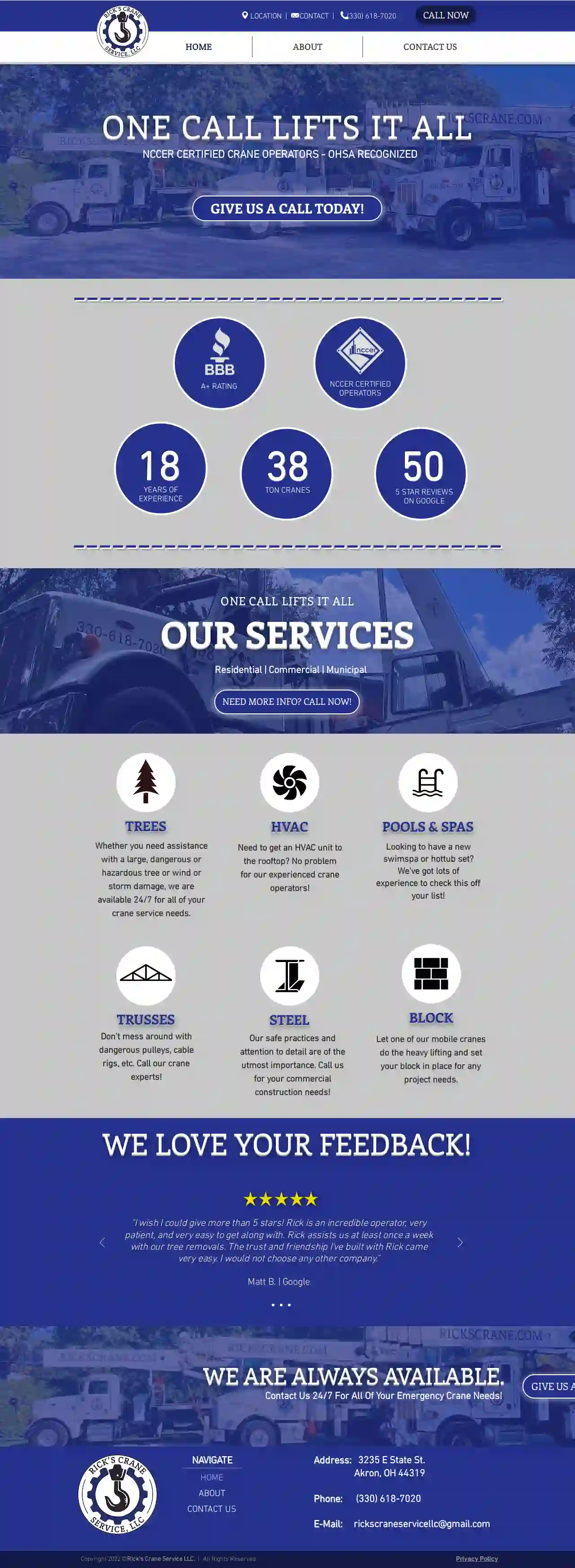
Ricks Crane Service LLC
551 reviews3235 E State St., Akron, 44319, USAt Rick's Crane Service LLC, we pride ourselves on being one of the most trusted and experienced crane service providers in the area. With over 18 years of experience and a team of NCCER certified crane operators, we're equipped to handle any job, big or small. Our services include residential, commercial, and municipal crane services, as well as specialized services like tree removal, HVAC unit installation, and pool and spa setup. We're committed to providing safe and efficient crane solutions that meet your needs and exceed your expectations. Contact us today to learn more about our services and how we can help you with your next project.
- Services
- Why Us?
- Accreditations
- Our Team
- Testimonials
- Gallery
Get Quote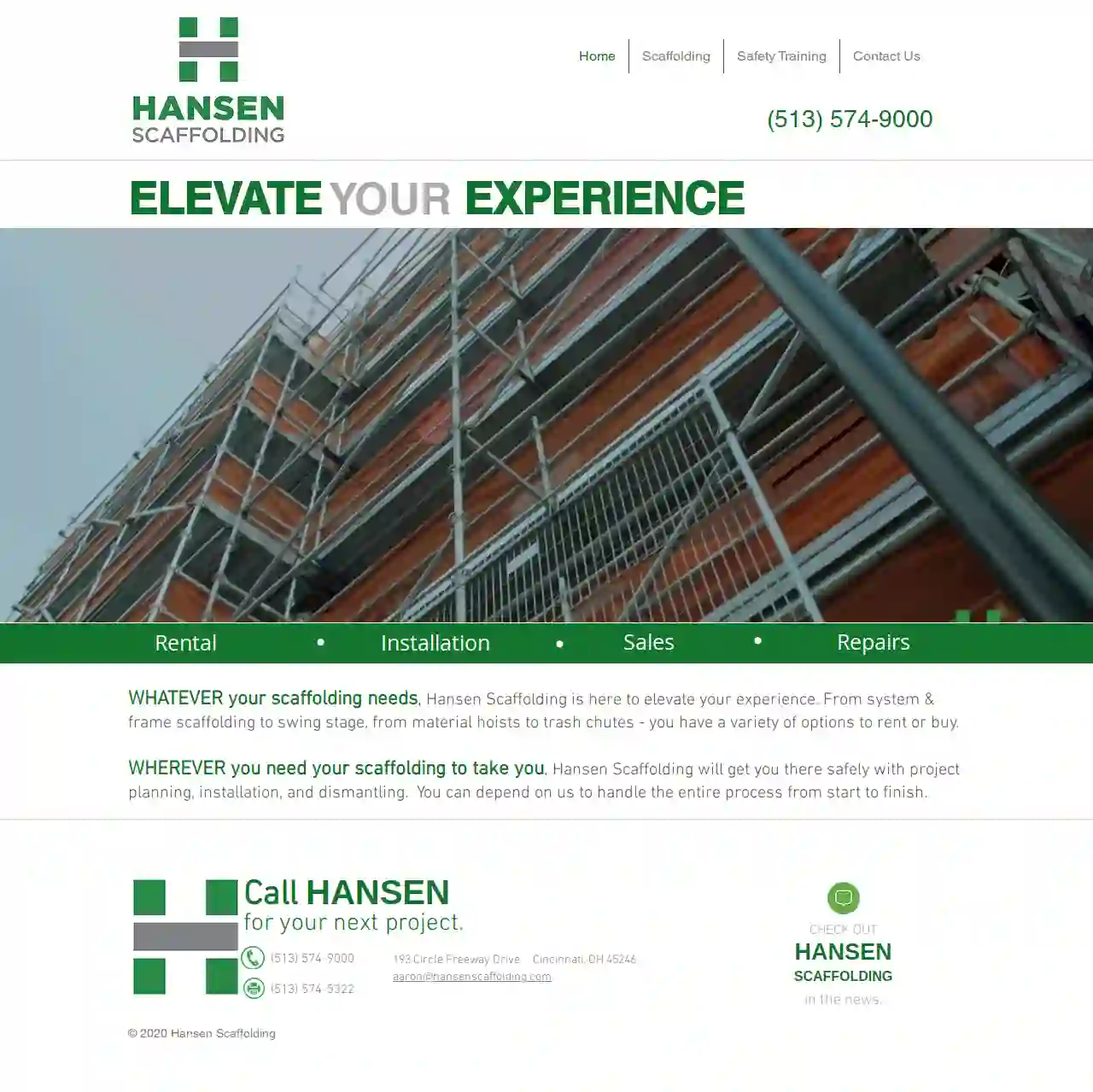
Hansen Scaffolding
4.76 reviews193 Circle Freeway Drive, Cincinnati, 45246, USAt Hansen Scaffolding, we're dedicated to providing top-notch scaffolding solutions for your next project. With a wide range of options to rent or buy, including system & frame scaffolding, swing stage, material hoists, and trash chutes, we've got you covered. Our team of experts will handle the entire process from start to finish, ensuring your project is completed safely and efficiently. From project planning to installation and dismantling, we're committed to delivering exceptional service and support. Our goal is to elevate your experience and provide you with the best possible scaffolding solutions. Contact us today to learn more about how we can help with your next project.
- Services
- Why Us?
- Gallery
Get Quote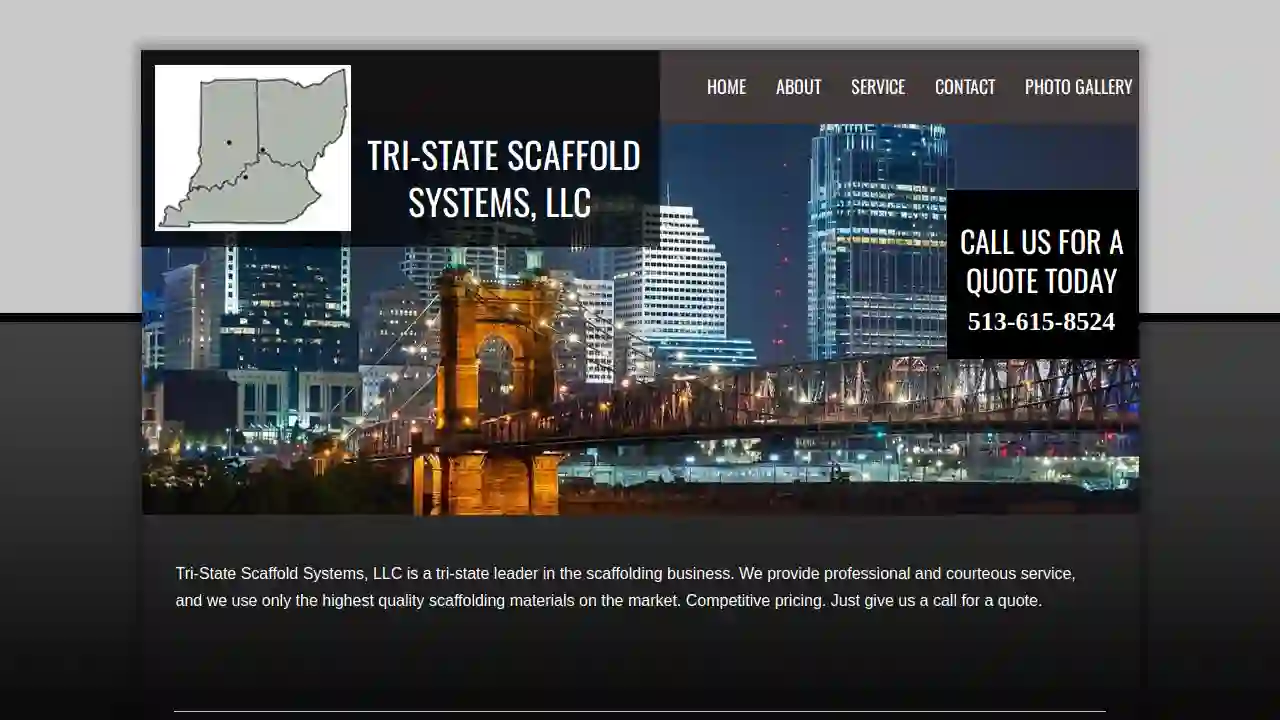
Tri-State Scaffold Systems, LLC.
4122 MOUNt carmel tobasco rd, Cincinnati, 45255, USTri-State Scaffold Systems, LLC is a tri-state leader in the scaffolding business, providing professional and courteous service with the highest quality scaffolding materials. With over 30+ years of experience, they specialize in the sale, service, rental, and repair of scaffold systems, including swing stages, work cages, scaffolding, rigging, sidewalk canopies, and erection and dismantlement services. They are committed to delivering superior quality and reliable equipment, with a highly knowledgeable staff that will see your project through from start to finish.
- Services
- Why Us?
- Accreditations
- Our Team
- Testimonials
- Gallery
Get Quote
BrandSafway Industries Cincinnati
4.73 reviews123 Main St, Cincinnati, OH, 45202, USBrandSafway is a leading provider of access solutions, including scaffolding, aerial work platforms, and forming and shoring equipment. With a strong commitment to safety, quality, and customer satisfaction, BrandSafway offers a wide range of services tailored to meet the unique needs of clients across various industries. Their team of experienced professionals works closely with clients to understand their requirements and deliver customized solutions that enhance efficiency and productivity. BrandSafway is dedicated to providing innovative access solutions that ensure safe and efficient project execution.
- Services
- Why Us?
- Accreditations
- Our Team
- Testimonials
Get Quote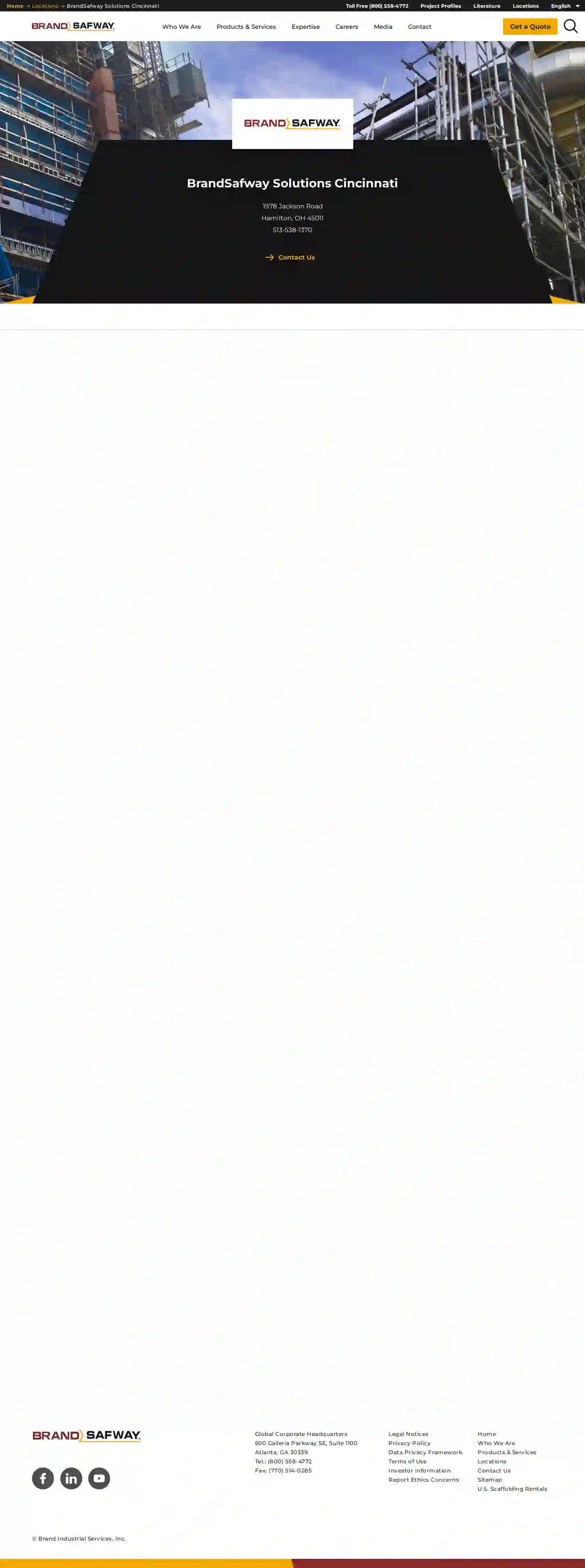
BrandSafway Solutions Cincinnati
4.33 reviews123 Access Lane, Cincinnati, 45202, USBrandSafway is a leading provider of access solutions, including scaffolding, aerial work platforms, and forming and shoring. With a strong presence in Cincinnati and Hamilton, the company offers a wide range of services to meet the needs of various industries. BrandSafway is committed to safety, innovation, and customer satisfaction, making it a trusted partner for businesses in the region.
- Services
- Why Us?
- Accreditations
- Our Team
- Testimonials
Get Quote
Quality Glass & Mirror Inc
4.480 reviews1747 Copley Road, Akron, 44309, USAt Quality Glass & Mirror, Inc., we offer a wide range of services to meet your needs. From glass replacement for windows to custom glass shower enclosures, custom mirrors, custom table tops, rescreening or making new screen frames, and much more! Our team of experts is here to help turn your dreams into reality. Give us a call or bring something by our shop at 1747 Copley Road to see if we can assist you! Our gallery has many photos to help spark your imagination!
- Services
- Why Us?
- Accreditations
- Our Team
- Testimonials
- Gallery
Get Quote
Lorain Chimney
4.835 reviewsElyria, USLorain Chimney in Elyria, OH, is a full-service masonry company with many years of experience in the industry. Some of our specialties include tuckpointing, chimney rebuilds, step rebuilds, porch repair, stone veneer installs and more. Our team always strives to provide excellent customer satisfaction. Our team is a local and family owned and operated. The owner is always present at every job. Our masonry professionals are always prompt, clean and friendly every step along the way. Call us today for a free estimate! We can be reached at 440-789-5884. We stand by our work. We have worked extremely hard to get to where we are today. Our goal is to make sure our clients are happy to the fullest of our extent. You get the quality and expertise of a large company from your local family run business. We handle all work ourselves. So not only will we come give you an estimate. We will be the ones showing up to complete the work as well.
- Services
- Why Us?
- Accreditations
- Our Team
- Testimonials
- Gallery
Get Quote
Over 2,353+ Scaffolding Contractors on our directory
Our scaffolding pros operate in Uniontown & beyond!
ScaffoldingHQ has curated and vetted Top Scaffolding Contractors in and around Uniontown. Find the most reliable pro today.
Frequently Asked Questions About Scaffolding Rental
- Reputation and Experience: Look for a company with a good track record and a history of satisfied customers.
- Licensing and Insurance: Ensure they have the proper licenses and insurance coverage to protect you from liability.
- Safety Practices: Inquire about their safety policies, training programs, and inspection procedures.
- Equipment Availability and Quality: Confirm they have the type of scaffolding you need and that it's in good condition.
- Pricing and Rental Terms: Compare quotes and assess the rental rates, duration, and any additional fees.
- Customer Service: Choose a company that is responsive, communicative, and helpful.
- Online Directories: ScaffoldingHQ is a specialized directory that connects you with reputable rental providers.
- Search Engines: Search for 'scaffolding rental [your location]' on Google or other search engines.
- Local Business Listings: Check local business listings, such as Yelp or Yellow Pages, for scaffolding rental companies.
- Word-of-Mouth Referrals: Ask contractors, builders, or friends for recommendations.
- All Components: Ensure all the necessary components (tubes, clamps, boards, braces, etc.) are present and in good condition.
- Damage or Defects: Look for any signs of damage, rust, or defects on the scaffolding parts.
- Scaffolding Tag: Verify that the scaffolding tag is up-to-date and shows the last inspection date.
- Safety Features: Check that guardrails, toeboards, and other safety features are included and in working order.
- Contact Your Local Authority: Start by contacting your local council or planning authority.
- Provide Project Details: Be prepared to provide details about the scaffolding (size, location, duration), the project, and any relevant drawings or plans.
- Application and Fees: Complete a permit application form and pay any associated fees.
- Inspection: An inspector may visit the site to verify the scaffolding plans and safety measures. The scaffolding rental company or the erector may be able to assist you with the permit application process.
What are some things to consider when choosing a scaffolding rental company?
How do I find scaffolding rental companies near me?
What should I check for when the scaffolding is delivered?
How do I get a permit for scaffolding?
What are some things to consider when choosing a scaffolding rental company?
- Reputation and Experience: Look for a company with a good track record and a history of satisfied customers.
- Licensing and Insurance: Ensure they have the proper licenses and insurance coverage to protect you from liability.
- Safety Practices: Inquire about their safety policies, training programs, and inspection procedures.
- Equipment Availability and Quality: Confirm they have the type of scaffolding you need and that it's in good condition.
- Pricing and Rental Terms: Compare quotes and assess the rental rates, duration, and any additional fees.
- Customer Service: Choose a company that is responsive, communicative, and helpful.
How do I find scaffolding rental companies near me?
- Online Directories: ScaffoldingHQ is a specialized directory that connects you with reputable rental providers.
- Search Engines: Search for 'scaffolding rental [your location]' on Google or other search engines.
- Local Business Listings: Check local business listings, such as Yelp or Yellow Pages, for scaffolding rental companies.
- Word-of-Mouth Referrals: Ask contractors, builders, or friends for recommendations.
What should I check for when the scaffolding is delivered?
- All Components: Ensure all the necessary components (tubes, clamps, boards, braces, etc.) are present and in good condition.
- Damage or Defects: Look for any signs of damage, rust, or defects on the scaffolding parts.
- Scaffolding Tag: Verify that the scaffolding tag is up-to-date and shows the last inspection date.
- Safety Features: Check that guardrails, toeboards, and other safety features are included and in working order.
How do I get a permit for scaffolding?
- Contact Your Local Authority: Start by contacting your local council or planning authority.
- Provide Project Details: Be prepared to provide details about the scaffolding (size, location, duration), the project, and any relevant drawings or plans.
- Application and Fees: Complete a permit application form and pay any associated fees.
- Inspection: An inspector may visit the site to verify the scaffolding plans and safety measures. The scaffolding rental company or the erector may be able to assist you with the permit application process.